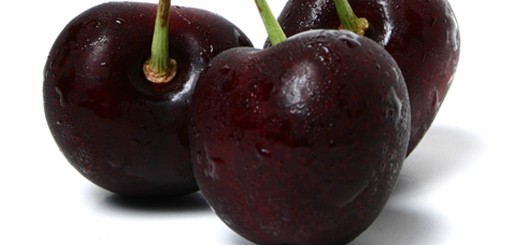Tips for Healthy Living: Spring Forward with Asparagus

Geri Wohl, CNC www.bettereatingcoach.com
Daffodils’ yellow heads are blooming, days are getting longer and asparagus is now coming into season! You can tell that asparagus is part of the spring crop as prices slowly come down to more appealing levels. Spring is also the time when asparagus is most flavorful. Asparagus, a member of the lily family along with onions, garlic, tulips and daffodils, originated in the coastal regions of the eastern Mediterranean and Asia Minor.
Asparagus is one of my personal favorites. Even my kids love it! These lovely spears have a unique flavor that is hard to describe. It is best to eat them quickly after buying since the flavor will begin to change as the sugars are turned into starches. By wrapping the ends of the asparagus spears in a damp paper towel, you can slow down the decomposition and extend the life of the spears.
So do you choose to eat the thin spears or the thicker ones? White, green or purple? Experiment and see which is your personal favorite. Green asparagus is the type with which we are probably most familiar. These spears are picked when they are about 6-8” tall. In contrast, white asparagus is grown underground to inhibit chlorophyll production. For more about chlorophyll, see my article http://www.bettereatingcoach.com/11413-the-skinny-on-mixed-salad-greens.html. The white spears have a delicate flavor and are very tender. They usually cost more since they require more hands-on labor. Purple asparagus is smaller and tastes fruitier. It also has about 20% more sugar content than the green spears. The color and flavor are due to the phytonutrient, anthocyanin that has anti-inflammatory properties and other health benefits.
What makes these spring wonders so good for us? They are very low in calories (100 grams is about 7 spears=20 calories) and have very little fat. Asparagus has moderate levels of dietary fiber. Dietary fiber assists with weight loss since fiber breaks down slowly contributing to prolonged satiety. Dietary fiber helps lower LDL levels, regulates blood sugar and assists in normal digestion. For more about fiber, see my article http://www.bettereatingcoach.com/121112-its-good-to-be-green.html.
Let’s take a look at some of the important vitamins and minerals that comprise asparagus:
- Folates: 100 grams of asparagus has about 14% of the RDA. Folate helps DNA synthesis within the cell. It is extremely important in early pregnancy to prevent neural tube defects in the developing baby. Folates are also essential to red blood cell production and cardiovascular health.
- Protein: Asparagus is about 27% protein. What a great vegetarian way to consume protein! Proteins help stabilize our blood sugar and aid digestion. Protein breaks down into amino acids that the body then uses to form new cells, muscles, hormones and enzymes.
- B vitamins: Asparagus is a very good source of at least 6 of the important B vitamins. The B vitamins play a role in energy production throughout the body. These vitamins are essential for optimal metabolic, enzymatic and cellular functions. B6 and folate (a B vitamin) both play a role in regulating homocysteine, an inflammatory marker of general inflammation in the body and heart disease.
- Antioxidant vitamins: Vitamins A, C and E are all important in improving the body’s ability to resist infections. As antioxidants, they play a role in neutralizing free radicals, which are linked to disease conditions.
- Vitamin K: Asparagus is very high in vitamin K. One cup contains about 70% of the RDA. Vitamin K is known for its role in healthy bones. As vitamin K is a component of the myelin sheath around our neurons, it may also help in limiting neuron damage during aging. Vitamin K may help prevent calcification, one of the mechanisms behind arteriosclerosis and cardiovascular problems.
Asparagus is a known diuretic. Because of its unique mineral profile (having high potassium and low sodium, for instance), it may be beneficial to those with some types of kidney conditions. Asparagus also acts as a cleanser to the arteries and blood, ridding them of excess cholesterol. As spring is associated with cleansing, this ability is not surprising. Asparagus is also supportive of the liver, aiding in detoxification. For more about detoxification, see my article http://www.bettereatingcoach.com/101712–wine-and-wellness.html. Some individuals will notice a sulfur smell to their urine after consuming asparagus. This is harmless. It is due to the sulfur-containing amino acids being broken down and the gas becoming airborne. Due to genetic differences, some people can smell the sulfur aroma and others can’t.
Asparagus is one of the few foods that contain an important type of carbohydrate called a polyfructan, specifically inulin. Polyfructans are sometimes referred to as prebiotics. The prebiotics provide the nourishment for our healthy gut bacteria. We’ve all probably heard of probiotics. They help us digest and absorb our food, manufacture some vitamins and keep the unhealthy bacteria in check. By consuming asparagus we not only obtain important nutrients but also keep our gut flora healthy.
Since asparagus is so nutritious and tasty, try to incorporate it into your meals. Whether in a salad, soup or side, it provides many nutrients to enhance our overall health. For a delicious frittata recipe, click on the link http://www.bettereatingcoach.com/recipe-late-springearly-summer-2012.html. If you have gout, asparagus contains purines, so limit your consumption. Enjoy the spears because the season is short.
© Geri Wohl, CNC











